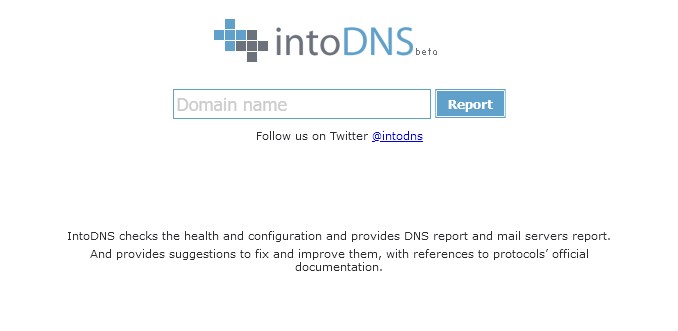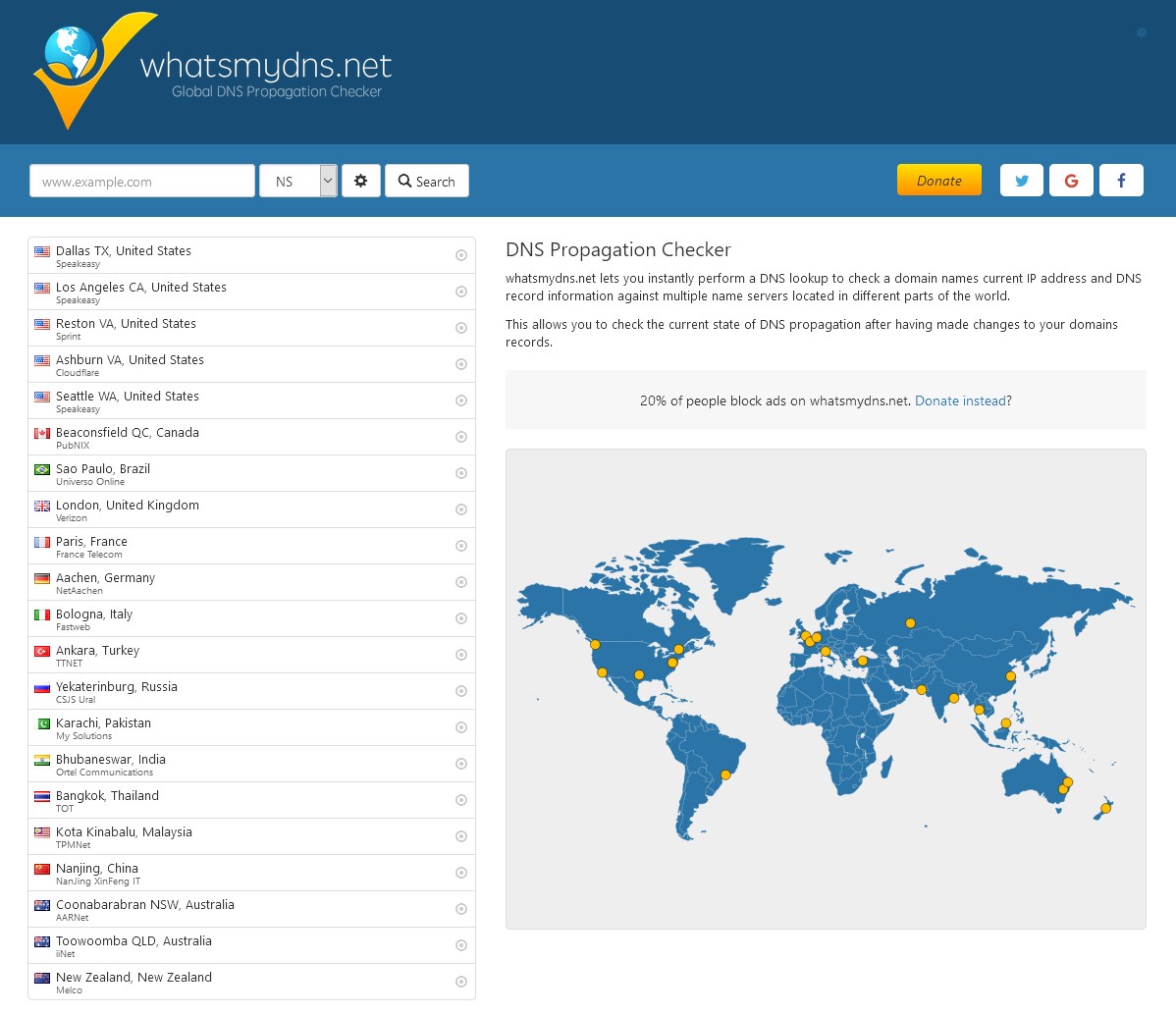Useful DNS tools during configuration, migration and propagation
The Domain Name System is what binds (excuse the pun) the internet together. By configuring DNS NS (NameServer) and the various other DNS records we can ensure others on the internet know how to connect to us and more.
But DNS can be tricky and these tools can help you check whether everything really is set up okay, or whether there's a problem somewhere.
The following are external websites, not in any way affiliated with Krystal, but they are our go-to tools for checking what's going on with DNS.
intodns.com - external site opens in a new window
This site gives a general check on DNS and mail server (MX records) health.

Simply enter your domain name (only enter your apex/naked domain name, don't include the www. or any other hostname part) and click Report button.
Ideally, you'll see mostly blue responses, maybe some yellow (mostly these will be fine - but worth checking).
If you see any Red then something may require fixing.
whatsmydns.net - external site opens in a new window
Often during site migrations from one host to another, or if you switch from shared hosting to a VPS or dedicated server you'll almost certainly need to change the nameservers for your domain.
When you do this (or in fact make any DNS change, add, edit or remove a record) - the serial number of your DNS zone file that contains all your DNS details gets incremented - and this causes a process known as propagation - where servers looking for your DNS see the updated zone file and pull a new copy - so they have up to date information.
This process of propagation - of getting your new details visible on DNS server all around the world can take 24-48 hours.
The What's my DNS tool allows you to pop your domain in and it'll look-up and show your DNS NS records from servers around the world.

Type your website's name in the box and then select the type of DNS record you'd like to check (e.g. NS = nameservers, A = Address record, MX = Mail eXchanger) and click the Search button.
You'll see the list on the left populate with details held by servers around the world - from which you can glean whether propagation is working and how quickly it is progressing.
Bear in mind that it's unlikely these test servers around the world have queried your domain before - so they will be doing so for the first time - which may influence the result. Whereas more local servers, used by you or visitors to your site may still have a validly cached version of your domains original DNS details.
